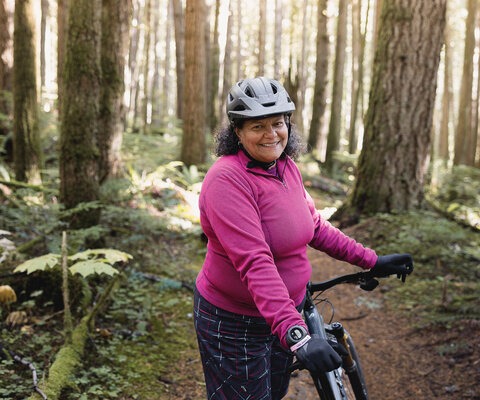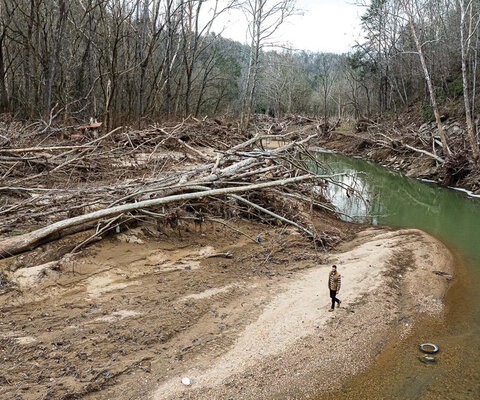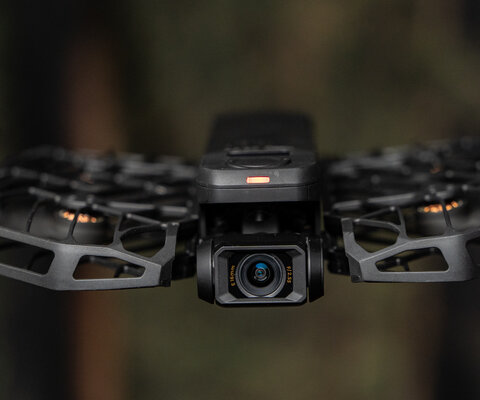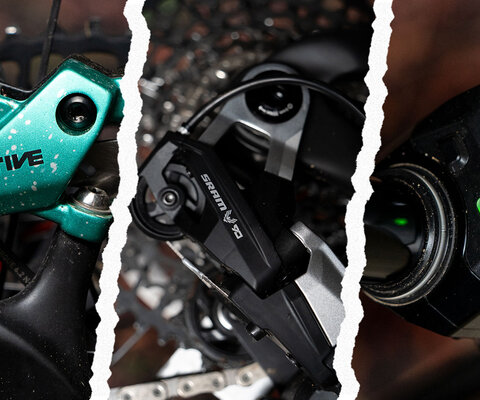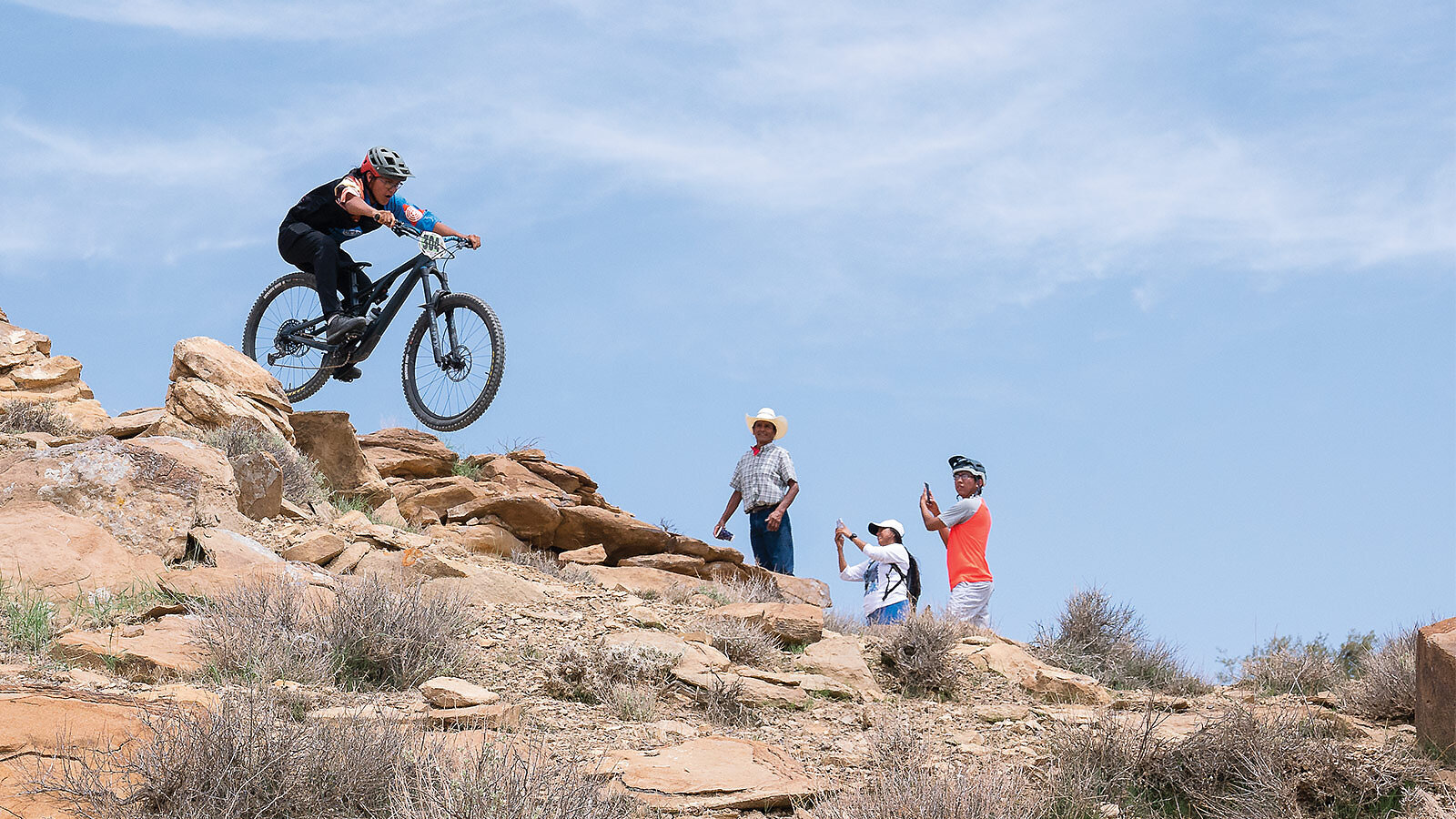
Essential Connection Young Riders Merge Traditions on Navajo Land
Words and Photos by Josh Conroy
A faded yellow tag hangs from a small juniper tree alongside an empty dirt road, a solitary directional marker in a vast desert. A sandy wash to the right leads to the top of a hill, where a horse corral shows the first sign of life since the turnoff onto “Indian Route 4,” some 23 miles back in Second Mesa, Arizona. Just beyond the corral is a house with a canopy stretching several feet out from the roof.
It’s the residence of Nigel Horseherder James, a Diné (Navajo) mountain biker and organizer of the Rezduro Invitational, an enduro race on Navajo Nation land near Hard Rock, Arizona. Nigel lives here with his mother, Germaine, and his father, Marvin, and their house is the de facto race headquarters.
About 30 yards from the house is a large teepee and next to that is a hogan, a traditional, one-room Diné home insulated with packed earth. The doors of both dwellings face to the east. From here, one can see most of the surrounding landscape, a semi-arid array of rolling hills punctuated by sage, juniper and pinyon pine rooted into the washes and even the cliffs of the surrounding mesas. It doesn’t look like a race venue, but throughout these hills are scattered the one ingredient needed for a mountain bike race: trails. And this weekend the Navajo Nation will host its first-ever enduro race, which Nigel refers to as simply the “Rezduro.”

The land is eerily quiet, with little noise except for the slight rustling of a gentle breeze through the nearby trees, and the canopy underneath, as Nigel’s family cooks and prepares for this weekend’s race. Riders trickle in to register and be briefed on the itinerary, which revolves around a multi-stage group race on the timeworn horse and sheep trails that crisscross the land, extending hundreds of miles and traditionally connecting the Navajo Nation with the Chiricahua Apache Nation to the south.
The Diné take pride in the fact that all the trails for the race were originally made by animals, apart from the endings of two trails named Sunrise and Lookout.
“If it weren’t for the animals—the sheep—we would not have these trails to ride,” says Nigel’s father, Marvin. “The sheep and land feed into our life as Diné. The animals teach you to be humble about things.”
Much of this humility lies in the fact that the Diné and their way of life has long been directly dependent on the land and the animals. The sheep they herd have traditionally allowed them to survive in an otherwise harsh climate.
“We use every part of the sheep, just as the Northern Plains [Nations] use buffalo,” Marvin says. “We use the meat, use the wool for rugs to sell, we use it to make clothing. Our life revolves around the sheep. The sheep and animals are our livelihood. They are the last connection that we as indigenous people have.”
“If it weren’t for the animals, the sheep, we would not have these trails to ride. The sheep and land feed into our life as Diné. The animals teach you to be humble about things.” - Marvin James
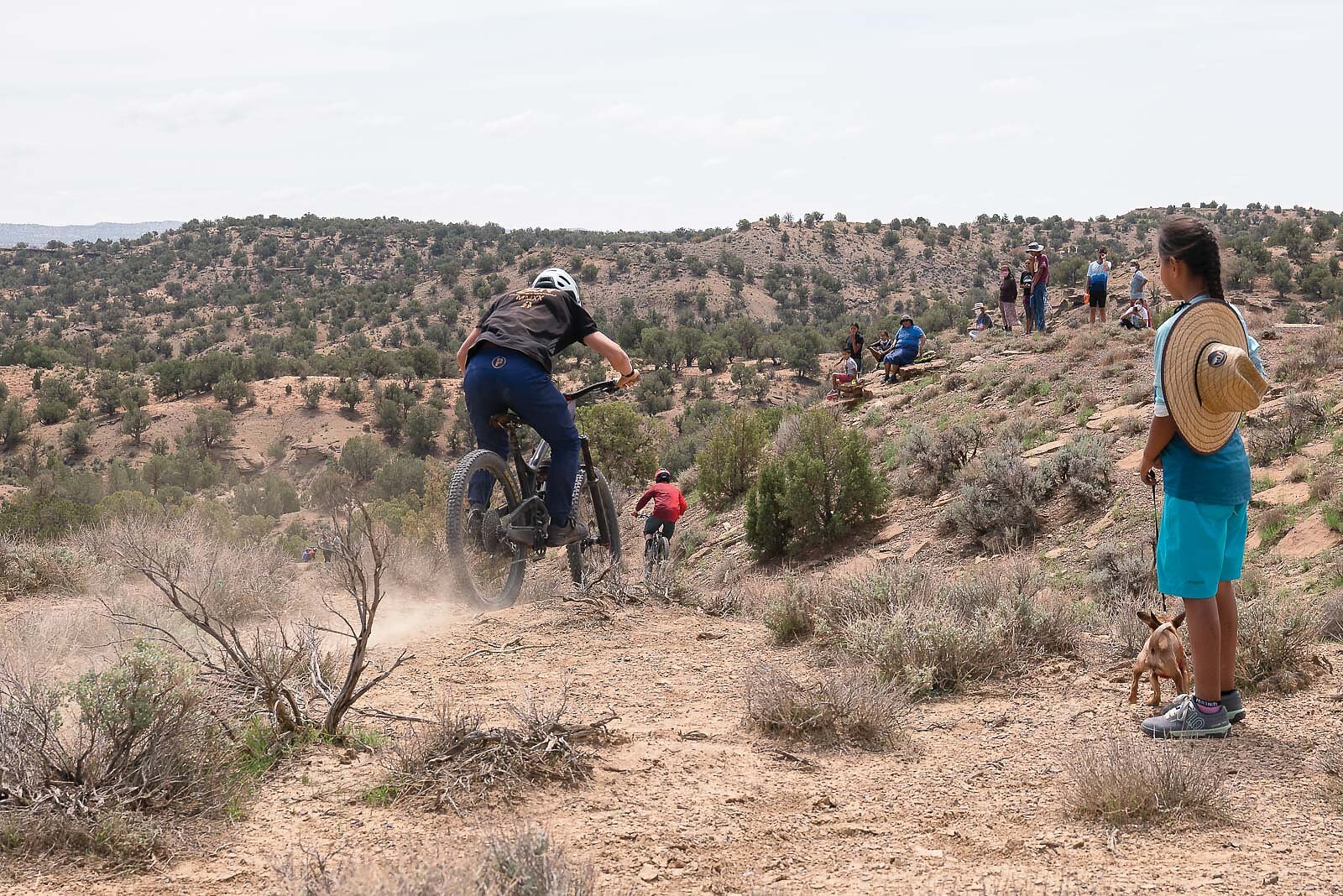
This essential connection to the animals and land are a huge part of what attracted Nigel to mountain biking. Though he’s a natural on two wheels, for Nigel, riding is a higher-level experience, a way of connecting to the land that is so special to him in an entirely unique way. At age 13, Nigel became the youngest rider to complete the Tour de Sih Hasin, an annual 300-mile ride over mostly dirt roads in northeastern Arizona that is intended to raise awareness of suicide among indigenous communities. In the Diné language, “Sih Hasin” translates roughly to “hope,” and organizers of the ride believe that persevering through the rigors of the experience has given many participants a newfound appreciation for life.
For Nigel, the experience gave him a profound appreciation for riding bikes, and he soon bought his first mountain bike, a Kona Lava Dome hardtail. He also expanded into BMX and noticed that many established BMXers such as Scotty Cranmer were getting into mountain biking.
“I saw the BMX guys were going to the mountain, too,” he says. “I started looking it up more and saw enduro. I was like, ‘I want to do this.’”
To find a place with challenging trails, Nigel needed to look no further than his ancestral land and its existing patchwork of well worn animal tracks. The rocky landscape also provided natural hits and sizable drops, so Nigel and his friends broke out the tools and made some connectors to more technical features to keep riders on their toes.
Last year, Nigel was racing with his buddy, Terence Yazzie, on a trail that connects his house to his grandparents’ home. As the competition heated up, they began timing each other and suddenly realized that they should hold their own enduro race. Nigel asked Germaine if she would help organize it, and she agreed.
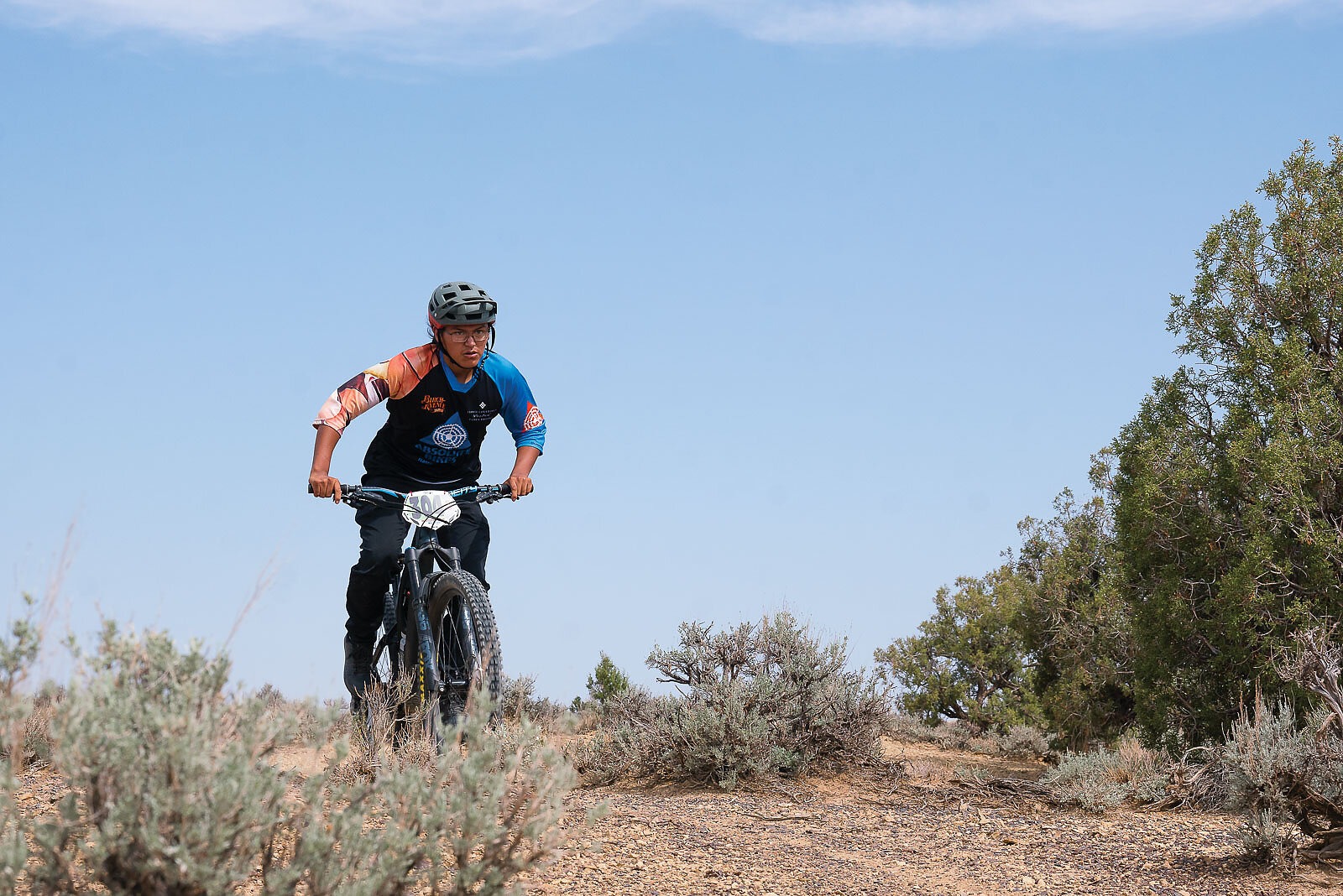
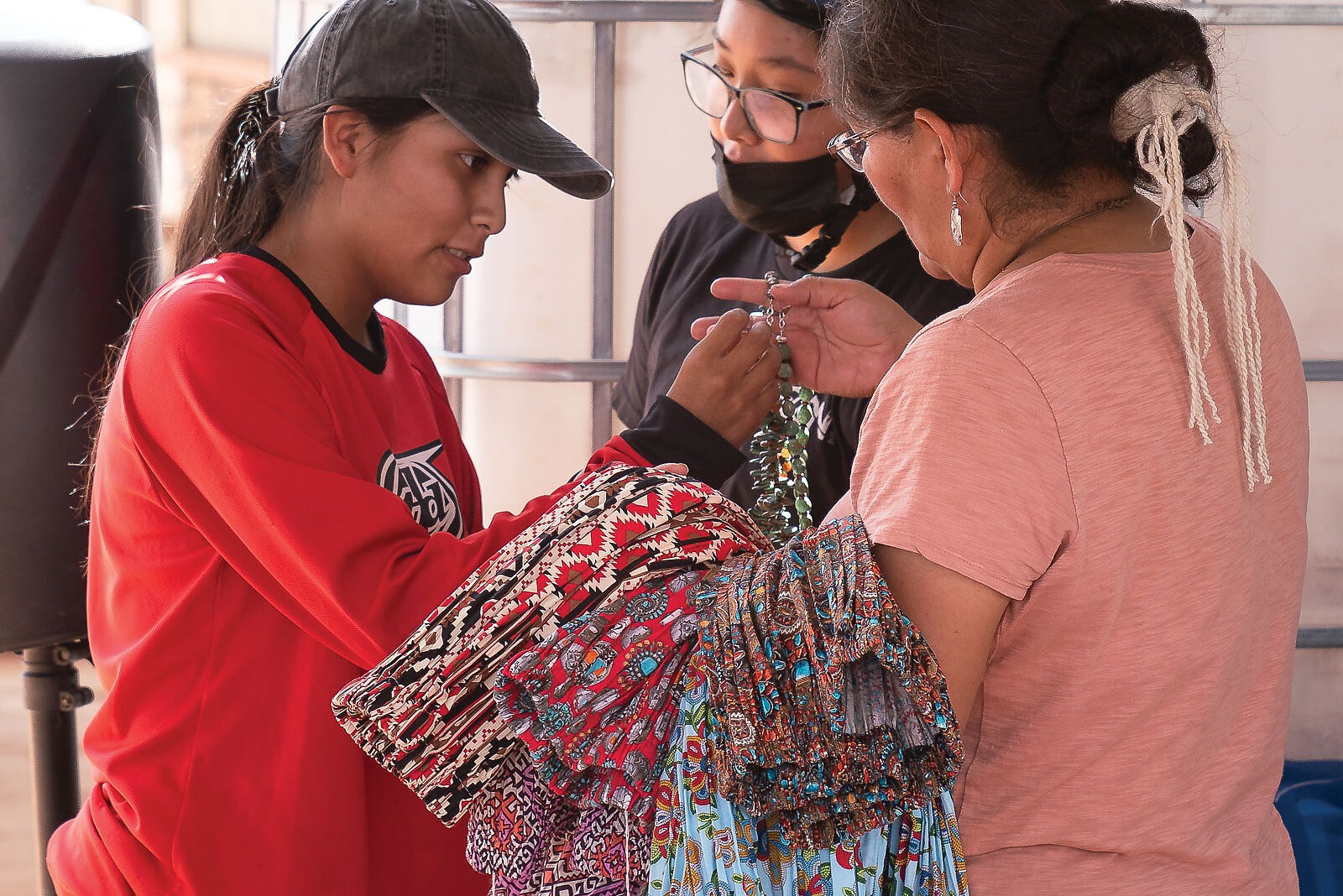
“I asked if they had enough stages, and they said ‘Yeah, we don’t really need to build anything else. It’s all here,’” Germaine says. The entire community rallied to organize the race, assigning roles for the event and sending out invitations. Within a week they were ready, and several days later riders from nearby communities began arriving to pre-ride the course as a group. The James family was amazed by the wide range of participants, with boys and girls of all ages and riding abilities turning up to collect their number plates.
It’s race day, and riders gather under the canopy at the James residence for a hearty, home-cooked breakfast of eggs, avocado toast, blue cornmeal porridge and piping-hot cinnamon rolls. The atmosphere is festive, with a brightly-colored ceremonial carpet hanging from the canopy, popping against the faint, yellow glow of the sunrise to the east. Most of the women are dressed up for the occasion, sporting long, colorful skirts and turquoise jewelry.
Nigel’s grandmother watches the racers start the first stage right in front of the James residence, braiding a child’s hair as a group of young kids tussle for their turn to take a 12-inch bike off a freshly-built jump. Truckloads of friends and family chase after the racers as they make their way through the stages, railing fun corners and popping off the periodic rock drops. At the end of each stage, racers congregate to cheer the others as they cross the finish line. The mood is lighthearted and overwhelmingly supportive, and the awards ceremony is a group celebration honoring the efforts of every contestant. For their prizes, female racers choose between a hand-woven long skirt and handmade turquoise necklaces.
“While you are pedaling some days you feel like giving up. The bike teaches to you to go, to push. However far you want to go, the bike can get you there.” - Marvin James
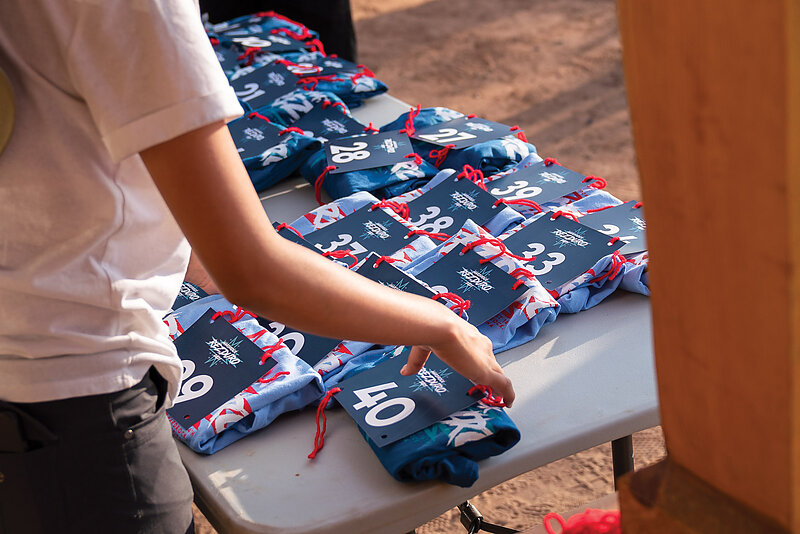
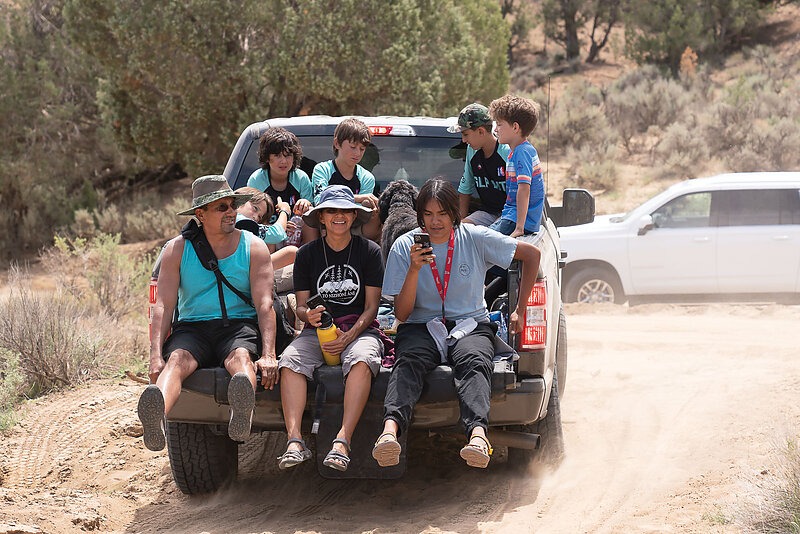
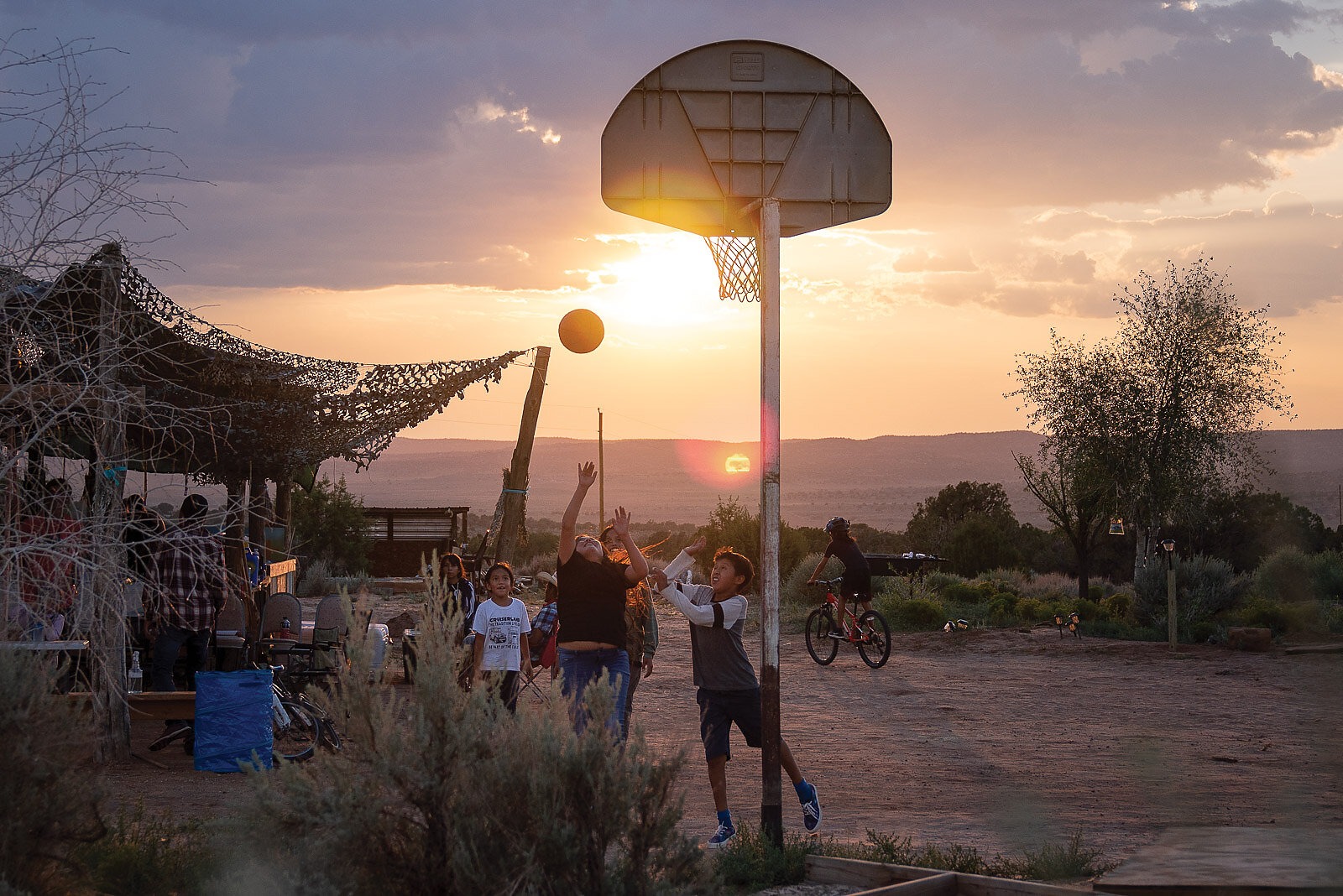
The community’s passion for riding bikes is palpable, and Nigel’s father Marvin says this bodes well for all the kids on the reservation, blending seamlessly with the totality of the Diné lifestyle and their deep connection to the land and their animals.
“Riding can show young people to be strong to the future, and to the things that are oncoming,” Marvin says. “While you are pedaling some days you feel like giving up. The bike teaches to you to go, to push. However far you want to go, the bike can get you there.”
For Nigel, the bike has taken him far beyond his childhood expectations of joining the rodeo—a common preoccupation of Diné youth. And though Marvin had originally envisaged Nigel as a potential rodeo star, he’s happy his son found mountain biking and views it as a healthy alternative to roping animals.
“Many young boys start herding sheep and goats on the reservation at a young age,” Marvin says. “Some become so good at it that now they are making a life out of something they used to do when they were a child. Hopefully mountain biking can be the same. The potential and goals are there.”
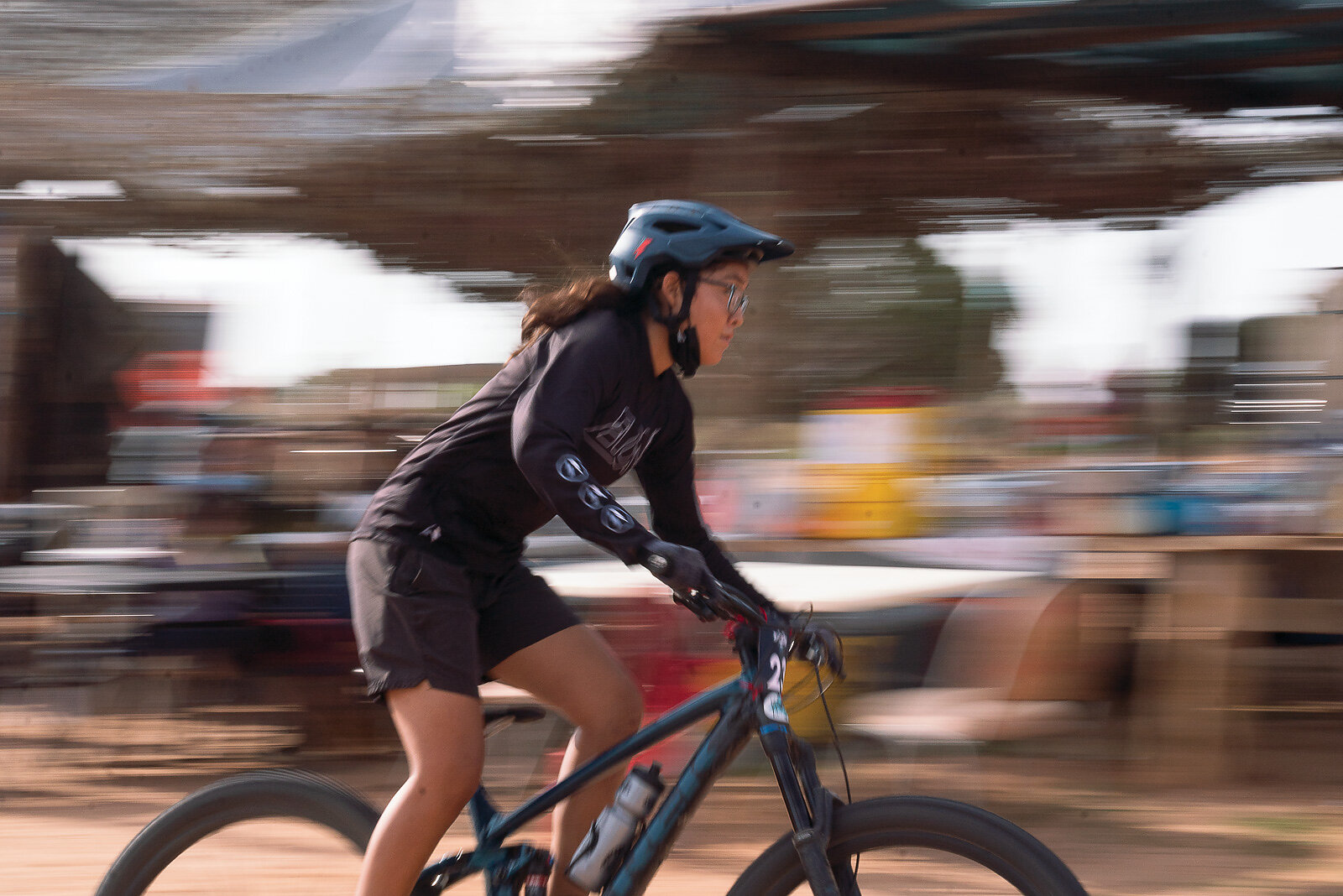
The James family also views mountain biking as a form of ceremony, something that is vital to them as Diné people. Though Nigel regularly engages in ceremony with his family, meditating with them and using their medicine, Marvin also considers his riding as a sacred communion with the land itself.
“I tell my kids to walk in beauty on the land, in a balanced way,” Marvin says. “To walk in balance in that duality of life helps us to understand ourselves and our purpose. That is all part of life, of thinking, of looking at things through the eyes of your heart and through the eyes of your mind.
“It connects us back to the land. Just like the wheel of a bike, the circle.”
